 I don't have my degree yet, so for now my recommendation for your sex addiction is to hire a good booking agent. 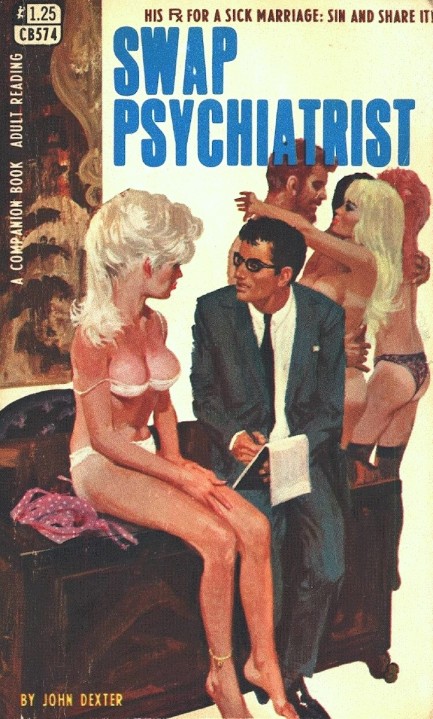
Above: Swap Psychiatrist, from 1968, with art by Robert Bonfils. The author, John Dexter, was credited with three-hundred and fifty books, according to the comprehensive website Greenleaf Classics Books. His name was used as a pseudonym by many, including Lawrence Block, Vivien Kern, Harry Whittington, and others. We have more than a few Dexter covers in the website, but our favorites are here and here.
 But, darling, you've been telling me for weeks you're as good as blind. 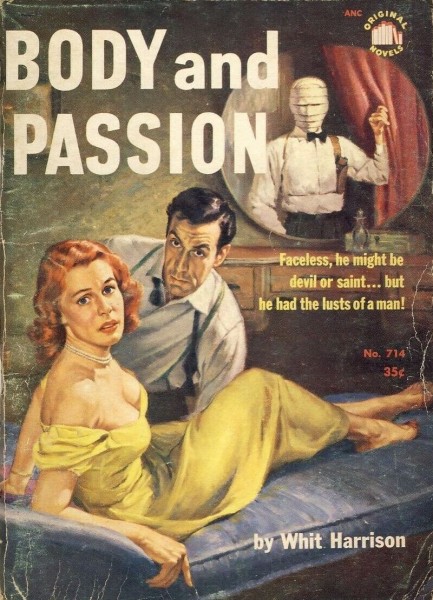
Above: a fun cover in the cheaters who got caught category for Whit Harrison's, aka Harry Whittington's, Body and Passion, 1952, from Original Novels, with cover art by an unknown. Some sources say this was also published as Dear Deadly Past, but other sources say it was published as Satan's Widow. The confusion may derive from Whittington's U.S. Wikipedia page versus his French Wikipedia page. Hopefully that'll get sorted out.
 There are authors and artists worth collecting, and maybe owners too. 
When you sell books (which we never do, but stay with us) you can't know when someone will attach an inordinate value to a certain item and pay any price to get it. We've paid above market rate a few times, for different reasons. We'd certainly pay extra for this Phantom Books edition of Harry Whittington's 1951 novel Satan's Widow. Why? Because it's signed. Not by the author. By the owner. Lahoma Hustich scrawled her name across the front in ink. We feel like we're getting to know her, because it's the second time we've seen her name on a book front. Is that really a reason to buy a book? Well, why not? Interestingly, Phantom was an Aussie imprint, but the book we own with Lahoma's signature came from the U.S. publisher Original Novels. She must have been a prolific owner if she collected from two continents. We'd buy Satan's Widow but one guy who has it wants $145 for it, and another wants $250. Not a chance. Sorry, Lahoma.
 Is this a subsidiary of the love cult I was in back in '53? If it is, then I've already had my whipping. 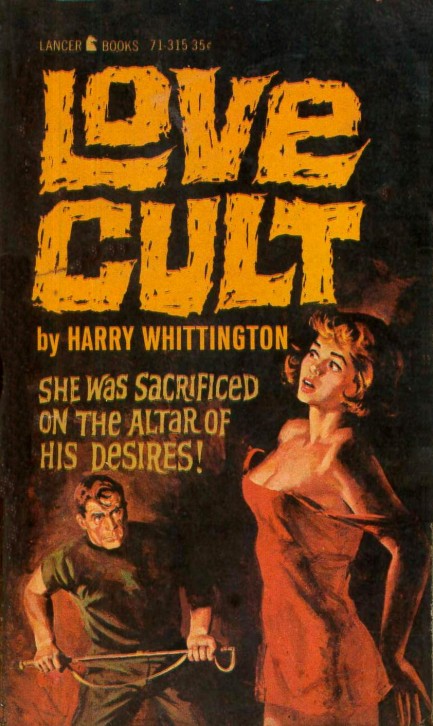
Above: a cover for Harry Whittington's Love Cult, published in 1962 by Lancer Books. This is an unusual case in mid-century fiction. The book is a reprint of the 1953 novel of the same name by William Vaneer, which was written under a pseudonym by James W. Lampp. Somehow the folks at Lancer got mixed up about that and attributed the book to Whittington. Embarrassing. We wonder if Lancer had to compensate Whittington in any way. You might assume the compensation would be to remove his name from this piece of low rent sleaze, but Whittington wrote plenty of books of this type this himself, so Love Cult definitely didn't hurt his reputation. Interested in what it's about? We tell you here.
 All these books are on our bucket list.
When you look at paperback covers every day it's interesting the common elements you notice. Of late, we've noticed buckets. They pop up on backwoods and rural sleaze novels, usually in amusing fashion, often in the possession of hardworking women going about difficult chores while nearby men don't do dick. We'll just tell you—that's not the way it works around our place.
 That's a hell of a knee you got there, baby. If the rest of you's anything like that knee the sky's the limit. 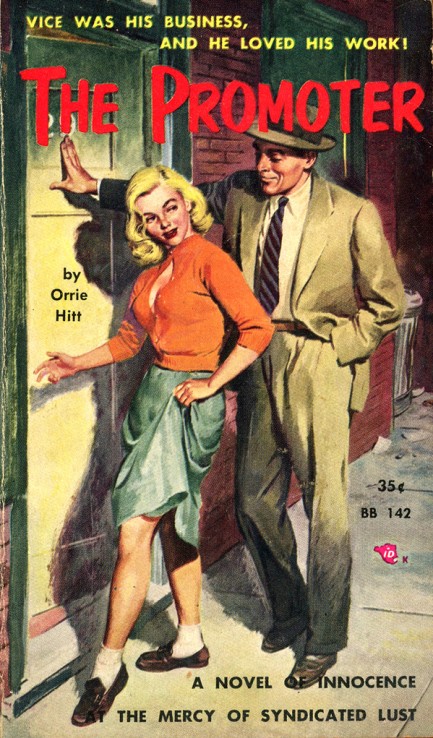
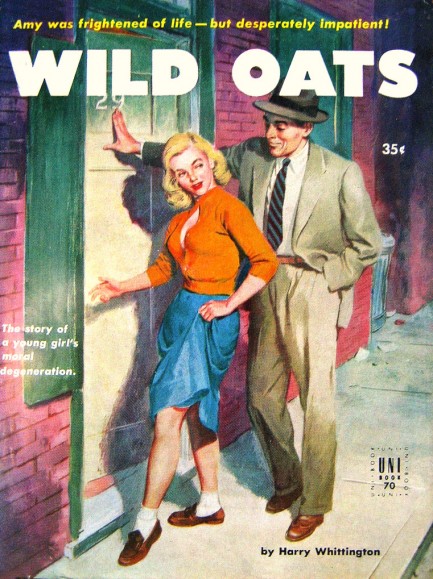 The Promoter, which appeared in 1957 from Beacon Books, is about the dirty picture racket, which is ironic considering how often author Orrie Hitt skirted obscenity laws. When the lead character Bill Morgan, normally a writer for an auto magazine, is recruited by a minister to investigate the big city under-the-counter porn racket he finds himself at first thwarted, then in over his head. He's also supposed to find the minister's missing daughter. Hmm... wonder where she'll turn up? You really get the feeling Hitt is speaking from experience when he describes how the porn industry worked during the mid-1950s, but the book isn't well written. Hitt churned out a novel every couple of weeks, and the haste shows. The best thing we can say is that the scenario is interesting. We know—we aren't exactly promoting sales of the book, but what can we do? At least the cover art is great. It's by the excellent Walter Popp, and had been previously used in 1953 for Harry Whittington's Wild Oats. Click Popp's keywords below for more visual treats. The Promoter, which appeared in 1957 from Beacon Books, is about the dirty picture racket, which is ironic considering how often author Orrie Hitt skirted obscenity laws. When the lead character Bill Morgan, normally a writer for an auto magazine, is recruited by a minister to investigate the big city under-the-counter porn racket he finds himself at first thwarted, then in over his head. He's also supposed to find the minister's missing daughter. Hmm... wonder where she'll turn up? You really get the feeling Hitt is speaking from experience when he describes how the porn industry worked during the mid-1950s, but the book isn't well written. Hitt churned out a novel every couple of weeks, and the haste shows. The best thing we can say is that the scenario is interesting. We know—we aren't exactly promoting sales of the book, but what can we do? At least the cover art is great. It's by the excellent Walter Popp, and had been previously used in 1953 for Harry Whittington's Wild Oats. Click Popp's keywords below for more visual treats.
 What a nice surprise! Let's eat dinner then we'll dump his corpse in the woods. 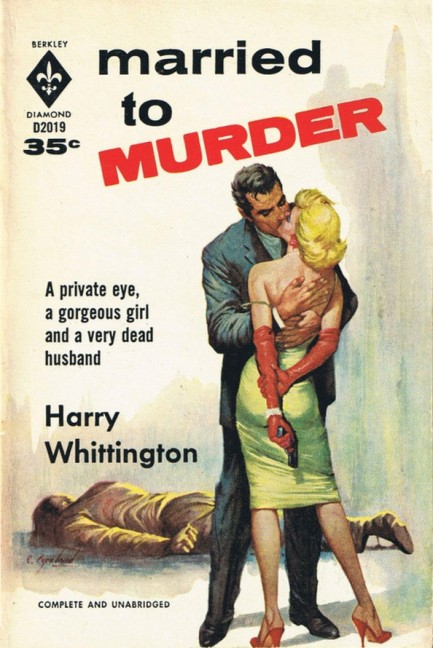
Above, nice Charles Copeland art for Harry Whittington's 1957 thriller Married to Murder. There's nothing like the occasional thoughtful gift to keep a marriage fresh.
 French publisher Editions Ferenczi had a Verrou unique way of doing things. 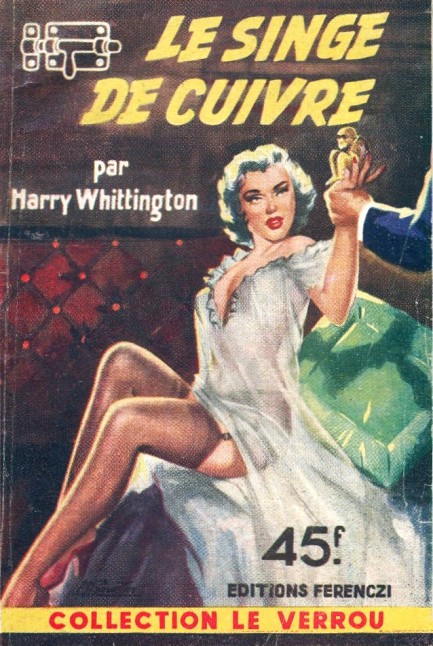
Collection le Verrou (The Lock Collection) consisted of 205 pocket-sized crime novels published in France by Editions Ferenczi from 1950 to 1959. Some were written by French authors using pseudonyms that sounded English or American, while other writers used their real names, such as Alexandra Pecker (yes, that's a real name) and René Poupon (idem). Other books were written by U.S. or British writers and had been previously published. For instance, above you see Le singe de cuivre by Harry Whittington, which you might know as The Brass Monkey, and below you'll find entries from Lawrence Blochman and English scribe Peter Cheney, better known as Peter Cheyney. The art on these books is generally quite colorful. The cover above was painted by Michel Gourdon, and below you'll find another piece from him, many efforts from Georges Sogny, and a couple from as-yet-unknowns. We really like Ferenczi's output, so expect us to share more covers from this publisher later. 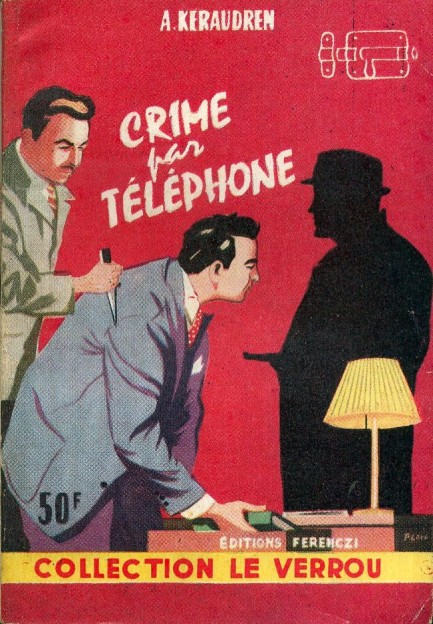 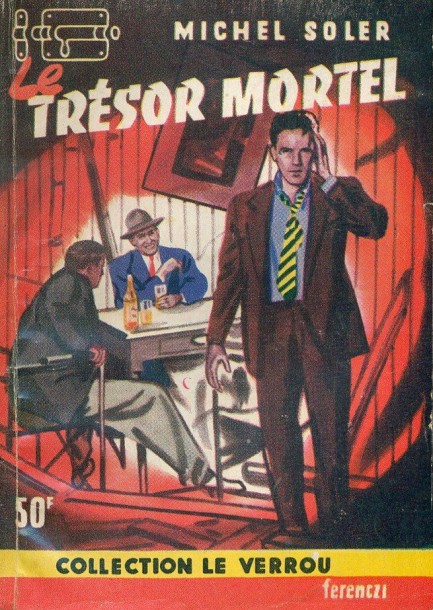 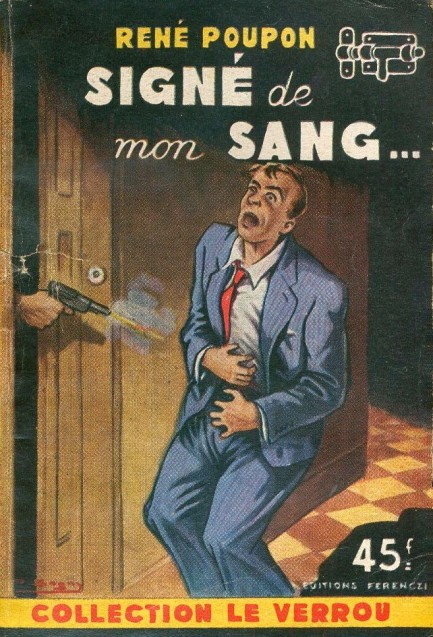 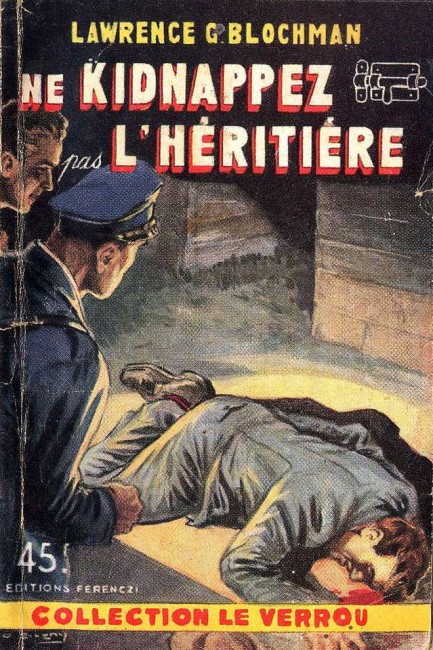 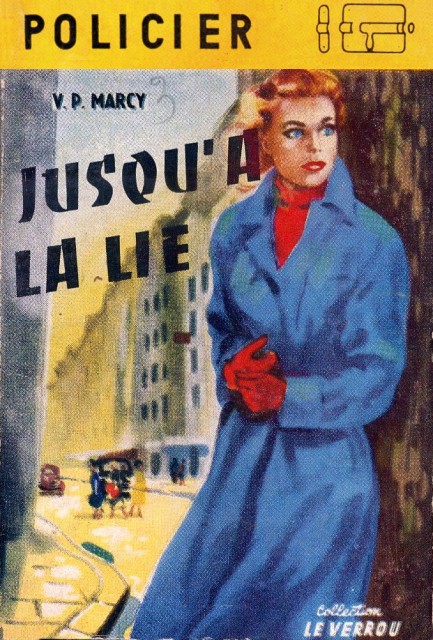 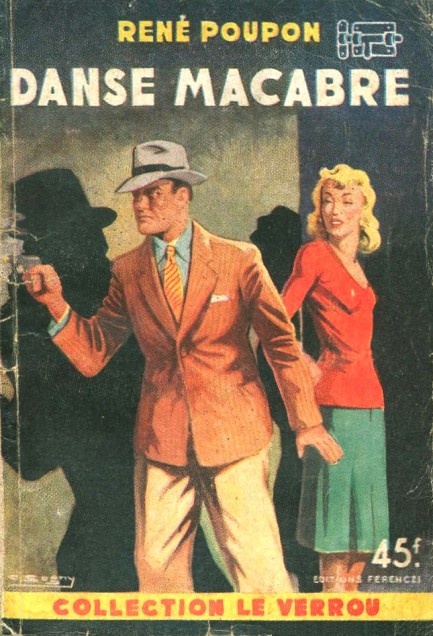 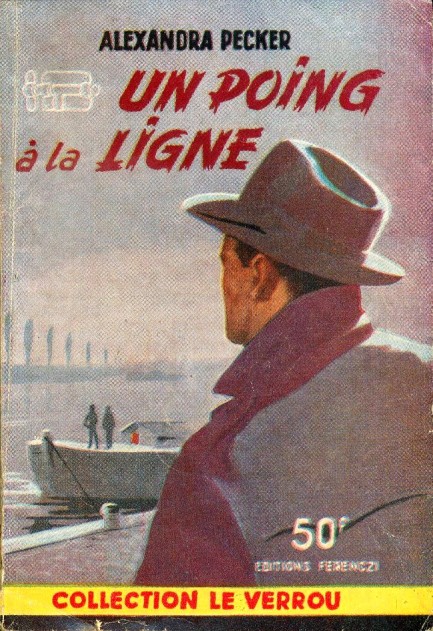 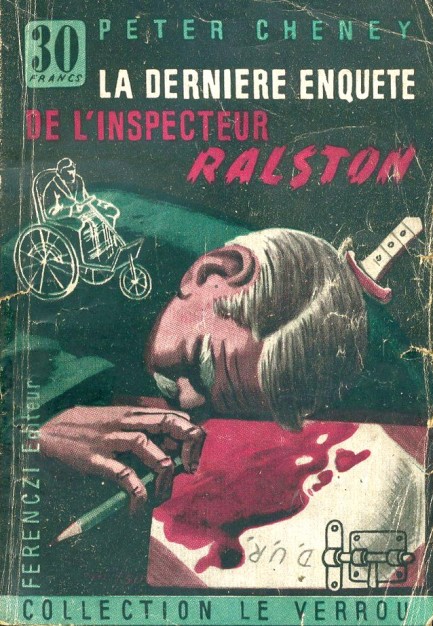 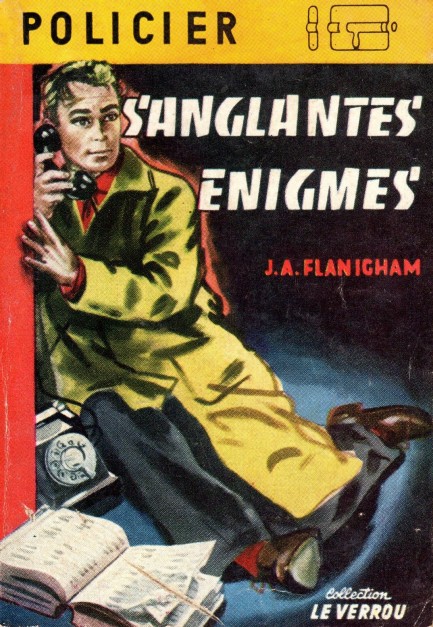 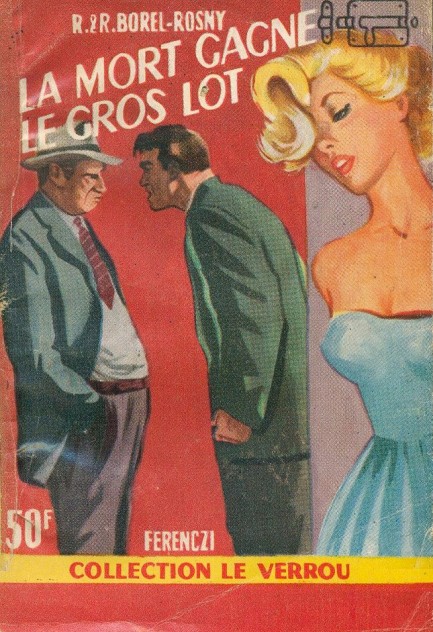 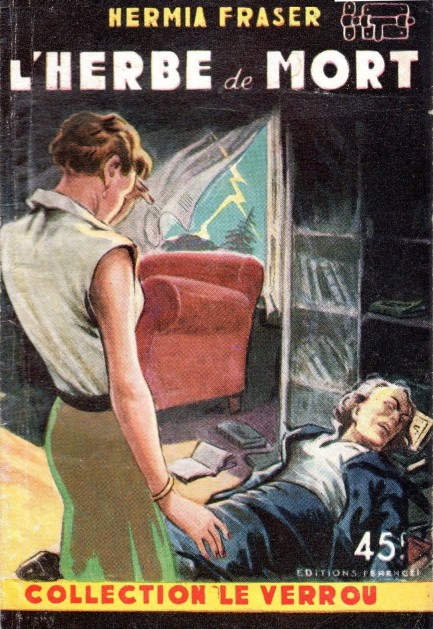 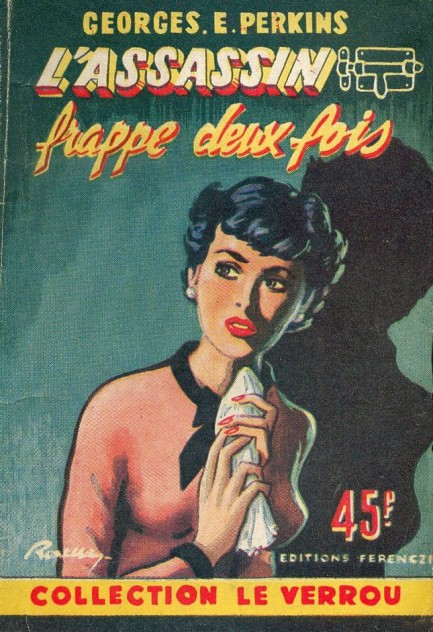 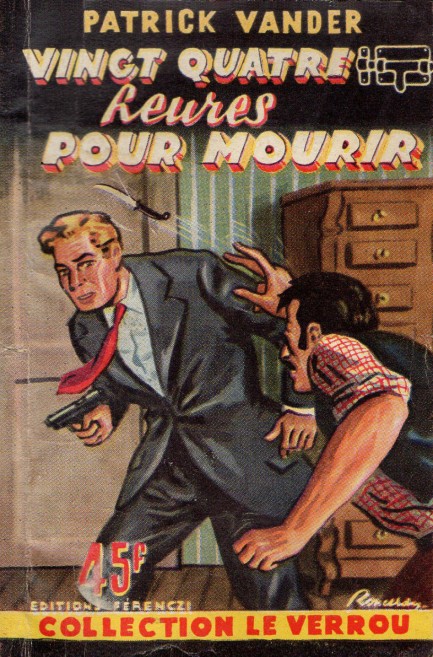 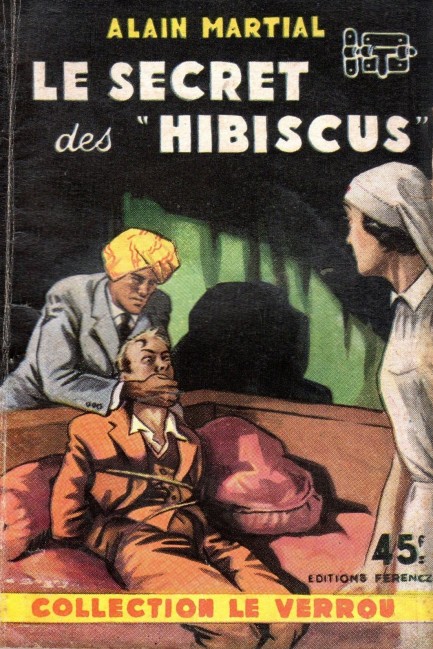
 Don't worry—last time I saw your husband he was making a spear to kill some pig he claims is lurking around. 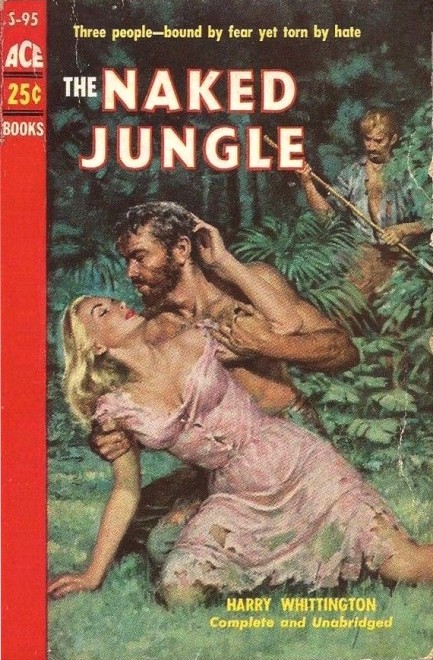
How many times have we talked about Harry Whittington? Plenty, but he wrote so many books, and had a habit of making them consistently interesting. In The Naked Jungle a plane crash leaves three survivors stranded on a deserted tropical island. There's Krayer, who's driven and a bit crazy; there's his wife Fran, who's lusty and unhappy; and there's Webb who wants Fran—badly. Three people, limited resources, and zero trust. On the flight Webb had overheard Fran tell her husband that their marriage is over, so he's not too worried about sticking his nose—or any other body part—where it doesn't belong. And Krayer didn't want to share survival supplies with Webb in the first place, so you can imagine how he feels about sharing his wife. It's all a recipe for more Whittington fun. The dramatic cover art is, sadly, uncredited, though it looks a lot like James Meese to us. Just a guess.
 Ouch, that one's getting a little sore. Can you can switch to the right one? 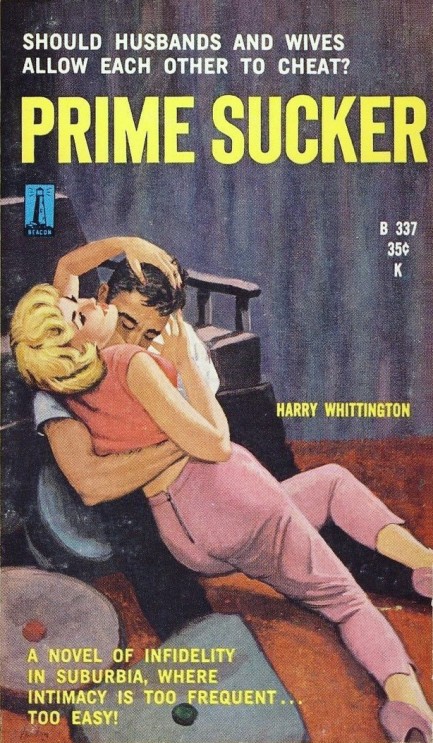
Above, a cover for Prime Sucker, 1954, written by Harry Whittington for Beacon-Signal, with art showing a man enjoying the milk of human kindness. Well, not really, but it kind of looks that way, right? In this one a man lusts for his employee's wife, which is normally not a problem for the employee, as his wife has more or less free rein. But this time the wife falls for her fling. Meanwhile the boss has a wife too, and while she's normally reserved, she's got a hidden wild streak, if only someone can bring it out. Put this one in the suburban wife-swapping bin. The cover work is by Harry Barton, and interestingly, the throat (or boob) sucking you see above was not a one-off. See here.

|
 |

The headlines that mattered yesteryear.
2003—Hope Dies
Film legend Bob Hope dies of pneumonia two months after celebrating his 100th birthday. 1945—Churchill Given the Sack
In spite of admiring Winston Churchill as a great wartime leader, Britons elect
Clement Attlee the nation's new prime minister in a sweeping victory for the Labour Party over the Conservatives. 1952—Evita Peron Dies
Eva Duarte de Peron, aka Evita, wife of the president of the Argentine Republic, dies from cancer at age 33. Evita had brought the working classes into a position of political power never witnessed before, but was hated by the nation's powerful military class. She is lain to rest in Milan, Italy in a secret grave under a nun's name, but is eventually returned to Argentina for reburial beside her husband in 1974. 1943—Mussolini Calls It Quits
Italian dictator Benito Mussolini steps down as head of the armed forces and the government. It soon becomes clear that Il Duce did not relinquish power voluntarily, but was forced to resign after former Fascist colleagues turned against him. He is later installed by Germany as leader of the Italian Social Republic in the north of the country, but is killed by partisans in 1945.
|

|
|

It's easy. We have an uploader that makes it a snap. Use it to submit your art, text, header, and subhead. Your post can be funny, serious, or anything in between, as long as it's vintage pulp. You'll get a byline and experience the fleeting pride of free authorship. We'll edit your post for typos, but the rest is up to you. Click here to give us your best shot.

|
|










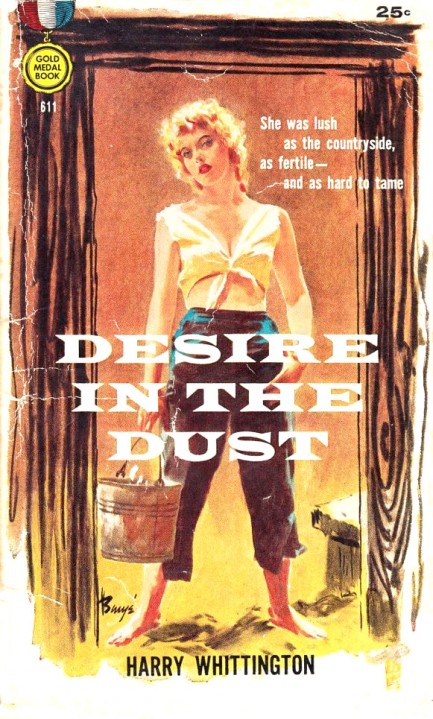
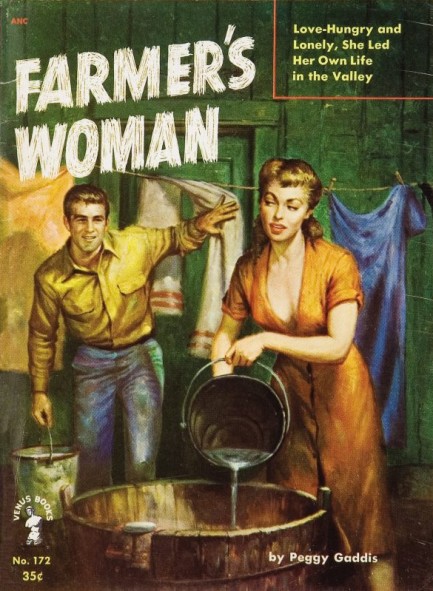
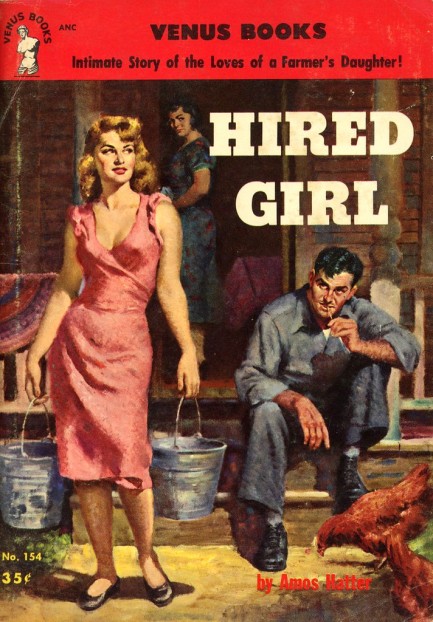
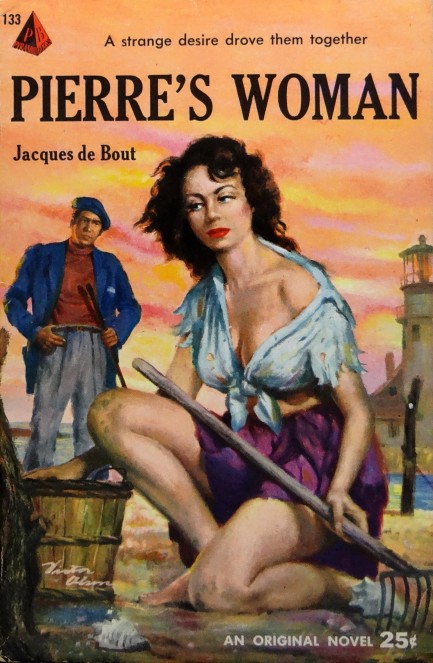
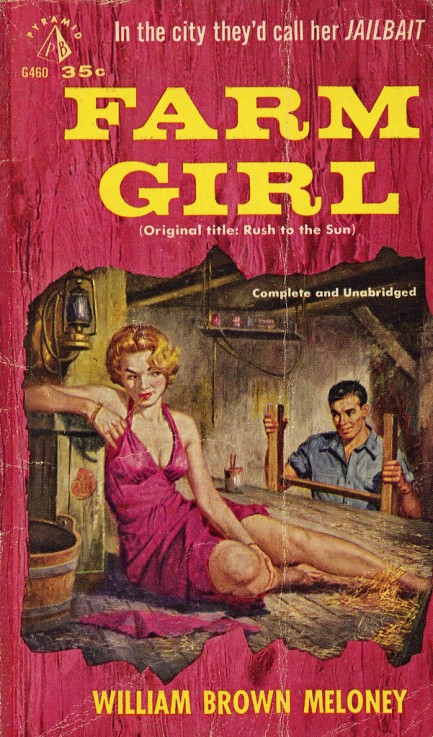
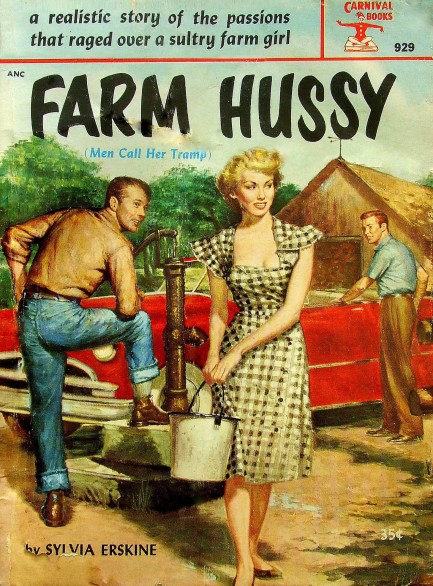
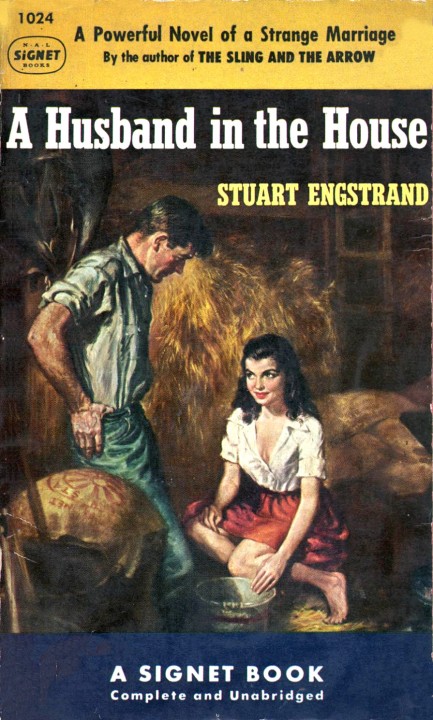


 The Promoter, which appeared in 1957 from Beacon Books, is about the dirty picture racket, which is ironic considering how often author Orrie Hitt skirted obscenity laws. When the lead character Bill Morgan, normally a writer for an auto magazine, is recruited by a minister to investigate the big city under-the-counter porn racket he finds himself at first thwarted, then in over his head. He's also supposed to find the minister's missing daughter. Hmm... wonder where she'll turn up? You really get the feeling Hitt is speaking from experience when he describes how the porn industry worked during the mid-1950s, but the book isn't well written. Hitt churned out a novel every couple of weeks, and the haste shows. The best thing we can say is that the scenario is interesting. We know—we aren't exactly promoting sales of the book, but what can we do? At least the cover art is great. It's by the excellent Walter Popp, and had been previously used in 1953 for Harry Whittington's Wild Oats. Click Popp's keywords below for more visual treats.
The Promoter, which appeared in 1957 from Beacon Books, is about the dirty picture racket, which is ironic considering how often author Orrie Hitt skirted obscenity laws. When the lead character Bill Morgan, normally a writer for an auto magazine, is recruited by a minister to investigate the big city under-the-counter porn racket he finds himself at first thwarted, then in over his head. He's also supposed to find the minister's missing daughter. Hmm... wonder where she'll turn up? You really get the feeling Hitt is speaking from experience when he describes how the porn industry worked during the mid-1950s, but the book isn't well written. Hitt churned out a novel every couple of weeks, and the haste shows. The best thing we can say is that the scenario is interesting. We know—we aren't exactly promoting sales of the book, but what can we do? At least the cover art is great. It's by the excellent Walter Popp, and had been previously used in 1953 for Harry Whittington's Wild Oats. Click Popp's keywords below for more visual treats.


























































































